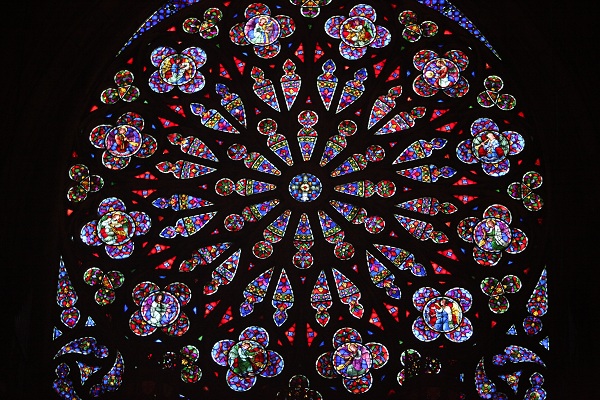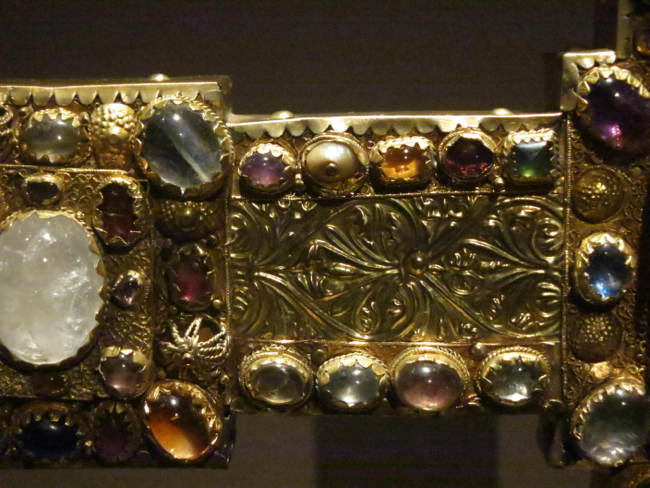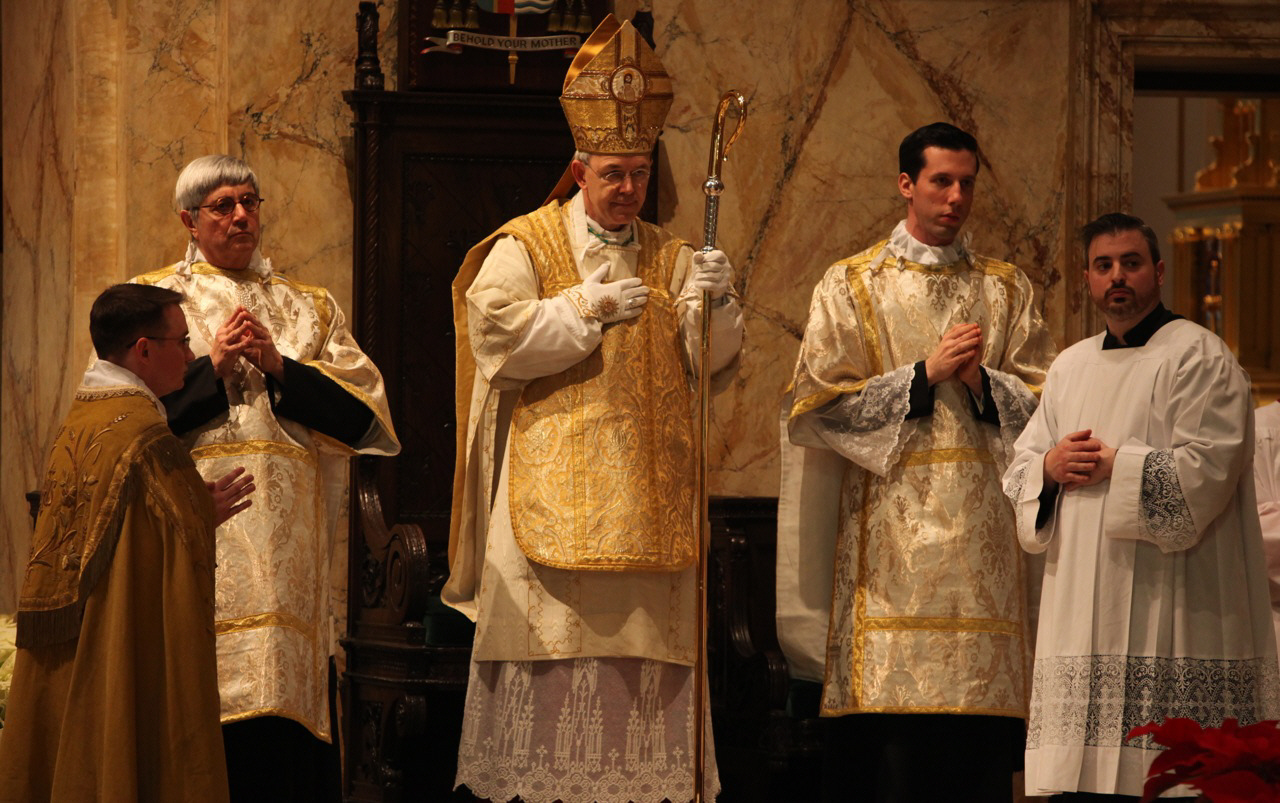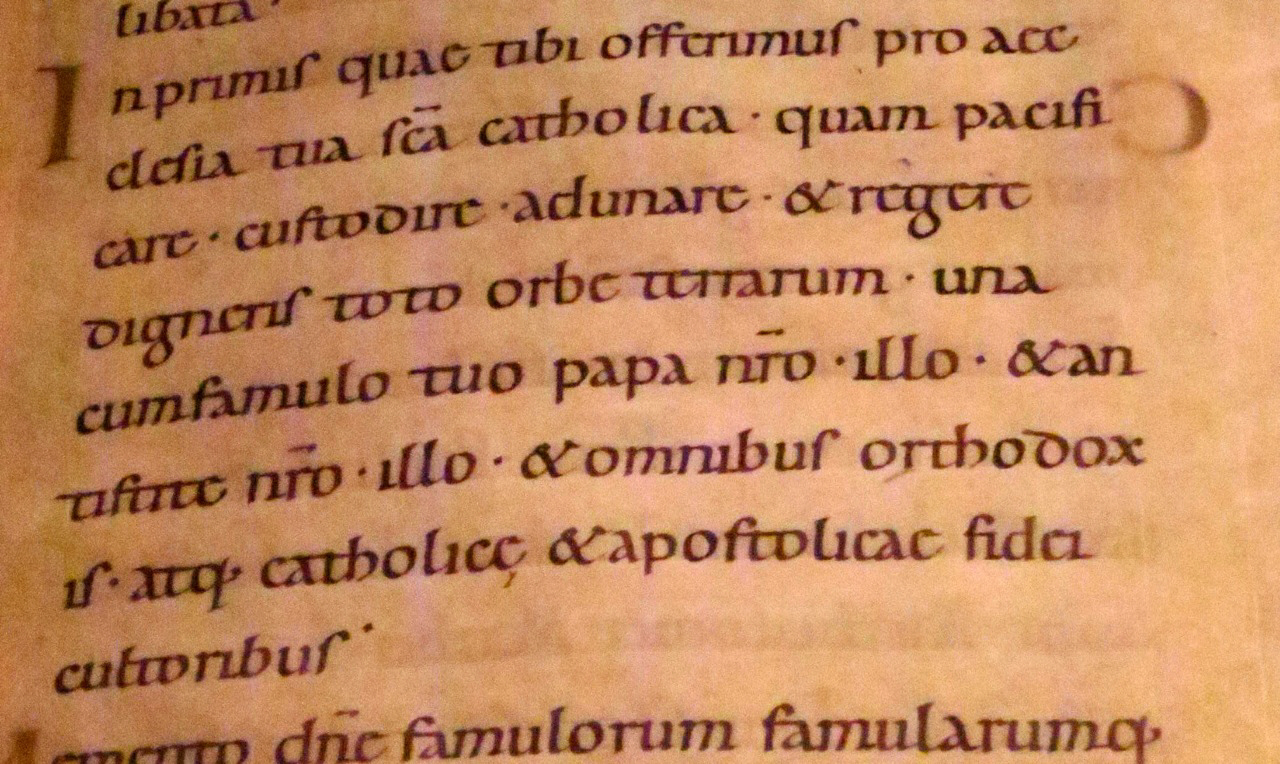The next Mass in the Extraordinary Form at St. Mary, Greenwich, will be a Missa Cantata for Tuesday of Passiontide on March 15th at 7:30 PM
Saint Mary Church
178 Greenwich Avenue
Greenwich, Connecticut 06830
29
Feb
The next Mass in the Extraordinary Form at St. Mary, Greenwich, will be a Missa Cantata for Tuesday of Passiontide on March 15th at 7:30 PM
Saint Mary Church
178 Greenwich Avenue
Greenwich, Connecticut 06830
26
Feb
Deliciae meae esse cum filiis hominum
The Lower East Side of Manhattan, to this day, has one of the largest concentrations of public housing in the United States. Concerning the ethnographic composition of the denizens, many hail from that Emerald Isle of the Caribbean, Puerto Rico. Zeroing in on one particular Boricua household one fine evening a few decades back, we spy the youngest teenaged progeny attempting to casually exit the domicile. A self-described “jibara” (roughly equivalent to “bumpkin”), the sharp-sensed mother halts the smooth stride with, “¿Y, a donde va’?” To which the chief of the parish altar boys unequivocally, veraciously and sincerely responded in conveniently gender-neutral English: “I’m going out to visit a friend.”
Excerpts from Instructions on the Visits to the Blessed Sacrament
Our holy faith teaches us, and we are bound to believe, that in the consecrated Host, Jesus Christ is really present under the species of bread. But we must also understand that He is present on our altars as on a throne of love and mercy, to dispense graces and there to show us the love which He bears us, by being pleased to dwell night and day hidden in the midst of us.
We can thus understand what Our Lord said of old by His prophet, that His delight is to be with the children of men (Prov. 8, 31); since He is unable to tear Himself from them even when they abandon and despise Him. This also shows us how agreeable all those souls are to the heart of Jesus who frequently visit Him, and remain in His company in the churches in which He is, under the sacramental species. He desired St. Mary Magdalene of Pazzi to visit Him in the Most Blessed Sacrament thirty-three times a day; and this beloved spouse of His faithfully obeyed Him, and in all her visits to the altar approached it as near as she possibly could, as we read in her life.
There it was also that St Francis Xavier found refreshment in the midst of his many labors in India; for he employed his days in toiling for souls, and his nights in the presence of the Most Blessed Sacrament. St. John Francis Regis did the same thing; and sometimes finding the church closed, he endeavored to satisfy his longings by remaining on his knees outside the door, exposed to the rain and cold, that at least at a distance he might attend upon his comforter concealed under the sacramental species.
You will find that all the saints were enamored of this most sweet devotion; since, indeed, it is impossible to find on earth a more precious gem, or a treasure more worthy of all our love, than Jesus in the Most Holy Sacrament. Certainly amongst all devotions, after that of receiving the sacraments, that of adoring Jesus in the Blessed Sacrament holds the first place, is the most pleasing to God, and the most useful to ourselves. Do not then, O devout soul, refuse to begin this devotion; and forsaking the conversation of men, dwell each day, from this time forward, for at least half or quarter of an hour, in some church, in the presence of Jesus Christ, under the sacramental species. o taste and see, that the Lord is good. (Ps. 33, 9.) Only try this devotion, and by experience you will see the great benefit that you will derive from it. Be assured that the time you will thus spend with devotion before this most divine Sacrament will be the most profitable to you in life, and the source of your greatest consolation in death and in eternity.
You must also be aware, that in a quarter of an hour’s prayer, spent in the presence of the Blessed Sacrament, you will perhaps gain more than in all the other spiritual exercises of the day. It is true, that in every place God graciously hears the petitions of those who pray to Him, having promised to do so: Ask, and you shall receive (John 16, 24); yet the disciple tells us that Jesus dispenses His graces in greater abundance to those who visit Him in the Most Holy Sacrament.
Oh, how sweet a joy it is to remain with faith and tender devotion before an altar, and converse familiarly with Jesus Christ, Who is there for the express purpose of listening to and graciously hearing those who pray to Him; to ask His pardon for the displeasures which we have caused Him: to represent our wants to Him, as a friend does to a friend in whom he places all his confidence; to ask Him for His graces, for His love, and for His kingdom; but above all, oh, what a heaven is it there to remain making acts of love towards that Lord Who is on the very altar praying to the Eternal Father for us, and is there burning with love for us. Indeed, that love it is which detains Him there, thus hidden and unknown, and when He is even despised by ungrateful souls! But why should we say more? “Taste and see.”
Without missing a beat, Mom asks “So, who is she?”
Mr. Screwtape
25
Feb
Laetare Sunday Missa Cantata at Cathedral Basilica of St. James, Brooklyn, Sunday, March 6 at 12:30 pm.
22
Feb
19
Feb
18
Feb
A small but precious early Renaissance painting the New York Historical Society has had in its collection since the 19th century has been recently restored and is being exhibited with two other panels which originally were probably attached to it.
Thomas Jefferson Bryan was an avid collector of art in the mid-19th century; the Gaddi altarpiece formed part of his collection. He exhibited these painting in New York as part of his Gallery of Christian Art, where the arrival of the so-called “Italian Primitives” must have been quite a shock. Mr. Bryan’s own portrait (above) reflects the neoclassical/romantic styles that at that time governed artistic taste on this side of the Atlantic. In 1867 Bryan’s collection of Christian art found a home at the New York Historical Society, the first museum in New York. Regrettably, much has been dispersed over the years.
This depiction of the enthroned Madonna and Child (Maestà) from 1330-34 is from the hand of Taddeo Gaddi of Florence, who had worked in Giotto’s workshop. His painting unites the hieratic style derived ultimately from Byzantium with the early Renaissance style originating with Giotto. Gaddi achieves monumentality in a work of modest dimensions.
(Above) The exhibit unites the central Maestà with two shutters that art historians think were likely attached to it.
Bryan’s Gallery of Christian Art was one of the first attempts by a wealthy collector to bring Catholic art of the medieval and Renaissance eras to the United States. In New York City alone a remarkable series of successors followed: J.P. Morgan’s Library, Huntington’s Hispanic Society of America and Rockefeller’s Cloisters. Do we not sense a longing for something their contemporary culture could not provide?
And now is not this art with its gold background, symbolism and solemn hierarchical figures a thousand times more foreign to the contemporary culture of New York than it was in Bryan’s day? For at that time a kind of Christianity, still shared by almost all in mid-19th century American culture, provided a means of access to this art. That is no longer the case. And even the Catholic Church, for which these masterpieces were created, has largely forgotten – indeed, has actively repudiated – this art. But for those pondering – or actively working on – a new rebirth (“renaissance”) of both culture and Church this painting and the story of how it came to this City will be a hope and inspiration.
(Above)The exhibit also includes several other Renaissance works that had been a part of Bryan’s collection – such as this Sienese crucifixion.
On view until March 20 at the New York Historical Society. (The permanent collection is closed until 2017 and the admission charge is on the high side – so you may prefer visiting during “pay-as-you-wish” on Fridays 6:00 – 8:00 PM.)
18
Feb
Tonight at 8:30 PM a traditional mass will be celebrated in the Princeton University chapel (which has the dimensions and appearance of a Gothic Cathedral).
From the Aquinas Institute (the Princeton University Campus Ministry):
“Join us as we celebrate the Sacred Mysteries in the Extraordinary Form of the Roman Rite! A valuable opportunity to rediscover God’s grace in the form of the liturgy in which faithful Latin Catholics around the world have assisted for centuries. Latin-English missals will be provided.”
For further information see HERE.
17
Feb
In addition, Father Don Grinco Charez has just announced the establishment of regular traditional Low Mass every Sunday at 2:30 p.m. (Also at our Lady Queen of Peace in Maywood)
16
Feb
Each evening from March 9th to the 18th at 7:00 pm at Our Lady of Mount Carmel Church, 259 Oliver Street, Newark, NJ, there will be a Solemn Novena with Benediction of the Blessed Sacrament in honor of St Joseph.
On Saturday, March 19th, at 12:00 noon, there will be a Solemn High Mass at Our Lady of Mount Carmel Church.
Rev Msgr Joseph Ambrosio will be the celebrant.
Rev Canon Jean Marie Moreau, ICKSP will be the deacon
Mr. James Barrett, Subdeacon.
At the end of mass there will be veneration of the relics of St. Joseph (his cloak and his staff ex indumentis and ex bacula).
Coffee and refreshments will follow in the Parish Center.
(Also at Our Lady of Mount Carmel, every Friday during Lent (with the exception of Good Friday) from 4-7 pm the Holy Name Society will sponsor a fish fry. It will be followed at 7:00 pm by Stations of the Cross in Church.)
(Image is in the Asamkirche, Munich, Germany)
14
Feb
Signs of the Holy One: Liturgy, Ritual and the Expression of the Sacred
By Uwe Michael Lang
(Ignatius Press, San Francisco 2015)
Fr. Uwe Michael Lang “of the Oratory” has given us a succinct, well written account of the movement to restore the presence of the sacred and the awareness of beauty within the Catholic Church. He provides those engaged in this effort a helpful guide to the relevant theory, tradition and authority.
In his first chapter the author offers an analysis of the “Sacred” and “Ritual.” Starting from the work of secular philosophers and sociologists, the “sacred’ and the “profane” emerge as categories. The sacred relates to the experience of the “numinous,” of the “wholly other.” (Rudolf Otto) That experience however is mediated and to some extent defined by ritual. Now ritual is “a culturally constructed system of symbolic communication.” (quoting Stanley J. Tambiah). A system of symbols – such as the mass – is far more than a series of texts to be read. “The solemn Mass consists of an integrated complex of words, music and movement, together with other visual and even olfactory elements.” (p. at 11)(quoting W.P. Mahrt). Without pretending to have exhausted in any way the richness of the ideas discussed in this chapter (and in the introduction), we can at a very minimum conclude that the Traditional Roman Rite is a classical example of the concept of “ritual.”
Fr. Lang then turns to recent Catholic theological challenges to these concepts. I found this chapter particularly helpful since I doubt I could ever have forced myself to wade through the works of Karl Rahner or Schillebeeckx. For highly influential schools of conciliar and post-conciliar theology in fact deny that any separate category of the Sacred can exist after the Incarnation. Post-incarnation, according to these thinkers, the entire world is sacred. It’s the kind of idealistic sleight-of-hand in which “what was sacred before” becomes positively harmful. Indeed, it seems to me hard to distinguish these theologies from outright atheism. The links of this line of thought to (emphatically non-theistic) avant-garde aesthetic theories are also obvious. In any case, it is obvious that behind many of the so-called “liturgical abuses” stand philosophical and theological tendencies that need to be engaged and refuted.
There follows an intriguing “excursus” discussing the issues raised by televising liturgies.
Fr. Lang then applies the analysis developed thus far in three subsequent chapters dedicated to Sacred Architecture, Sacred Art and Sacred Music.
Regarding sacred architecture, the illustrations of recent churches in this book reveal most concretely that different universes of art exist within the Church today. And the champions of architectural modernism advance ideas not at all dissimilar to the theological views Fr. Lang has previously outlined. In contrast, Fr. Lang attempts to develop some minimum “principles” for Sacred Architecture. They are:
1. Verticality – which points to the transcendence of God;
2. Orientation (the church must have a sense of direction);
3. Thresholds must exist (The entrance to the church must clearly mark off the interior from the exterior world; the sanctuary and the body of the church should be clearly offset from each other); and
4. “Iconoclasm is not a Christian option” (quoting Cardinal Ratzinger) – a purely abstract art is inappropriate.
Those even remotely familiar with recent “official” Catholic architecture can judge for themselves the extent to which these principles apply today. As noted, this book helpfully provides some telling illustrations of the problem.
On Sacred Art, Fr. Lang shows us the crisis of an art from which the very concept of beauty has disappeared. And he concludes that beauty can only be recovered if the liturgy is restored.
On Sacred Music, Fr. Lang shows the disastrous state of religious music, caught between the “two millstones” of “puritanic functionalism” – in which the Church’s musical heritage is replaced by congregational singing in the name of “Active Participation”– and the “functionalism of accommodation” in which music derived from contemporary jazz and pop makes its way into the sanctuary. In this analysis, as so often elsewhere in Signs of the Holy One, Fr. Lang proceeds from ideas of Cardinal Joseph Ratzinger. We can only regret how little of his perceptive thought Pope Benedict XVI was able to put into practice in his papacy.
Signs of the Holy One is written in a clear yet scholarly style. Fr. Lang carefully analyzes in each case the relevant authority. But that authority is not limited to the Vatican II and the post–conciliar popes but encompasses earlier councils and papal pronouncements. The works of the 18th century Benedict XIV are especially remarkable. Furthermore, abundant references and citations to leading authors on the topics covered making this work a gold mine for further research. The authors cited include some, like Jean Clair and Martin Mosebach, who bring a much more impassioned and poetic tone to Fr. Lang’s calm text.
I might have wished at times for more concrete and more contemporaneous examples to illustrate what the author discusses. I am not sure, for example, how effective it is to critique Beuron art, Augustus Pugin’s advocacy of the Gothic, the playing of Verdi’s music in a church in Sicily in 1860 (as depicted in a 1962 movie) and Wagner’s Parsifal. These critiques invite debate (how, for example, is Parsifal “blasphemous”?) and don’t we have much more recent, more vivid examples before us – such as the Copacabana Beach Mass of Pope Francis or the Venice exhibits of Cardinal Ravasi?
Fr. Lang frankly concedes his disappointment on the failure of the ideas advocated by this book to progress during the papacy of Benedict XVI. Under the new regime will they remain as just the personal whims of the “pope emeritus”? Fr. Lang correctly points to the continuing and developing search for the sacred and the beautiful in liturgy among younger Catholics as a basis for hope. Yet mending the “torn threads of Catholic ritual” “is a work that will need patience and perseverance and will not be completed in our lifetime”: (p.155) Those engaged in that work, however, will require not just commitment and energy but also knowledge and understanding. In this regard, with Signs of the Holy One Fr. Lang has provided them with an indispensable handbook.



